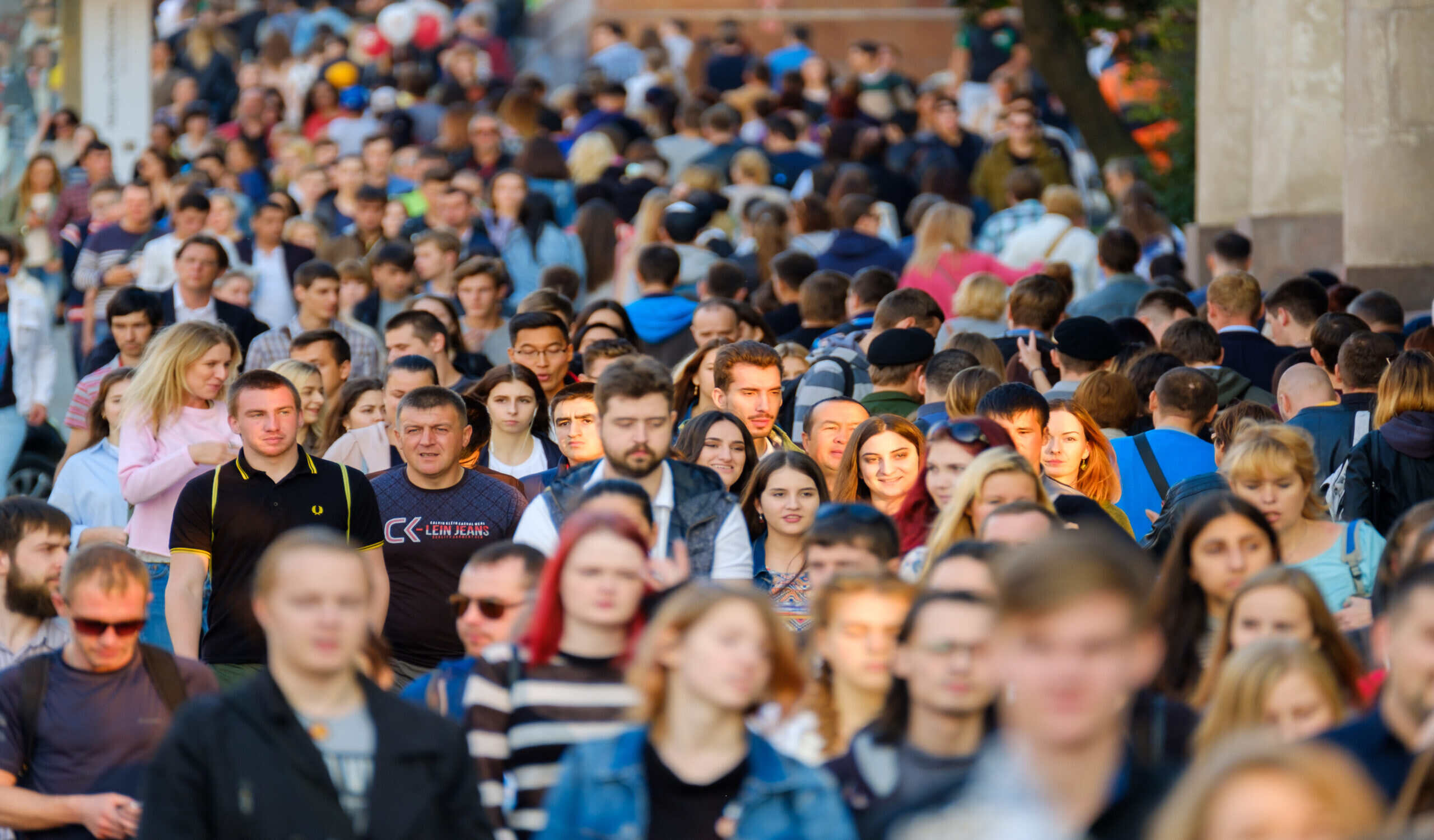
The global population is a fascinating and ever-evolving topic that encompasses a wide range of subjects, from demographics to culture, economics to geography. Understanding the intricacies of global population is crucial in addressing societal challenges and shaping policies for a sustainable future. In this article, we will explore 17 enigmatic facts about global population that shed light on its diversity, patterns, and trends. From the staggering growth rates in certain regions to the declining birth rates in others, from the impact of urbanization on population distribution to the cultural nuances of different societies, these facts will provide a deeper insight into the complex dynamics at play. So, fasten your seatbelts and get ready for an eye-opening journey into the world of global population!
Key Takeaways:
- The world’s population is growing rapidly, with Africa leading the way. Urbanization, aging, and migration are shaping our future, and how we manage these changes will impact generations to come.
- As the global population reaches 9.7 billion by 2050, countries face unique challenges. From low fertility rates in Japan to urbanization and resource pressures, understanding these dynamics is crucial for sustainable development.
The world’s population is projected to reach 9.7 billion by 2050.
The global population is expanding rapidly, with estimates suggesting that it will reach a staggering 9.7 billion by the year This unprecedented growth poses various challenges for governments, economies, and the environment.
China has the highest population in the world.
With over 1.4 billion people, China takes the top spot as the most populous country on Earth. India follows closely behind with approximately 1.3 billion inhabitants.
The fastest-growing population in the world is in Africa.
Africa’s population is experiencing exponential growth, making it the fastest-growing region globally. By 2050, it is estimated that Africa will be home to more than 2.5 billion people, accounting for approximately 25% of the world’s total population.
Japan has one of the lowest fertility rates.
Japan is facing a significant demographic challenge as its birth rates decline. Currently, it has one of the lowest fertility rates in the world, leading to an aging population and potential labor shortage.
More than half of the world’s population lives in urban areas.
The majority of people now reside in cities rather than rural areas. Over 55% of the global population lives in urban areas, a trend that is expected to continue as urbanization accelerates.
India is projected to surpass China as the most populous country by 2027.
According to demographic projections, India is expected to overtake China as the world’s most populous country by This shift will have significant implications for both countries and the global community.
The global median age is increasing.
As healthcare improves and life expectancies rise, the global median age is gradually increasing. This demographic shift poses challenges in terms of healthcare, retirement systems, and workforce dynamics.
The world’s population is becoming increasingly urbanized.
Rapid urbanization is transforming the global population landscape. More people are migrating to cities in search of opportunities, resulting in significant social, economic, and environmental implications.
Women outnumber men in the global population.
Although the ratio varies among different regions, women generally outnumber men in the world population. This has significant implications for gender dynamics, social structures, and policy considerations.
Population growth is unevenly distributed.
Population growth is not evenly spread across the globe. Some countries and regions experience rapid population growth, while others face declining populations or even negative growth rates.
The global population is aging.
Due to declining birth rates and increased life expectancy, the global population is rapidly aging. This trend raises concerns about healthcare systems, retirement planning, and support for the elderly.
Urban population density varies widely.
While cities are growing, their population densities differ significantly. Some cities are densely populated, while others have more spacious urban landscapes. This variation in density has implications for infrastructure, resources, and quality of life.
Migration plays a significant role in population dynamics.
Migration is a key factor influencing population growth and demographic changes. People move within and across borders for various reasons, including economic opportunities, political factors, and social factors.
Climate change will impact future population patterns.
As climate change progresses, it will have profound effects on population patterns. Rising sea levels, extreme weather events, and environmental degradation may lead to forced migration and displacement.
Population growth affects resource availability.
The growing global population puts pressure on resources such as food, water, and energy. Sustainable resource management is crucial to ensure the well-being of current and future generations.
Education and healthcare play vital roles in managing population growth.
Access to quality education and healthcare services is crucial in managing population growth and ensuring overall well-being. Empowering individuals with knowledge and healthcare resources promotes informed choices and sustainable development.
Population policies vary across countries.
Countries implement diverse population policies to address their unique demographic challenges. These policies can range from incentives for family planning to immigration regulations and aging population strategies.
Conclusion
In conclusion, the global population is a fascinating and complex topic that continues to intrigue scholars and experts worldwide. From the impact of population growth on resources and the environment to the diverse cultural and social dynamics that arise from different population groups, understanding the enigmatic facts about global population is crucial for shaping our collective future.By delving into the intricacies of world population trends, demographics, and migration patterns, we can gain valuable insights into the challenges and opportunities that lie ahead. It is only by harnessing these insights that we can develop sustainable solutions and create a brighter and more equitable future for all.
FAQs
Q: What is the current global population?
A: As of the latest estimates, the global population stands at approximately 7.9 billion people.
Q: Is the global population evenly distributed around the world?
A: No, the global population is not evenly distributed. There are regions with high population density, such as Asia, and regions with low population density, such as parts of Africa and Oceania.
Q: What factors contribute to population growth?
A: Population growth is influenced by various factors, including birth rates, death rates, migration patterns, and socio-economic development.
Q: How has the global population changed over time?
A: The global population has experienced significant growth over the past century. In 1950, the world population was around 2.5 billion, and it has more than tripled since then.
Q: Is the world population expected to continue growing?
A: While population growth rates have been slowing down in recent years, the global population is still projected to increase in the coming decades. However, the rate of growth is expected to decrease over time.
Q: How does population growth impact the environment?
A: Population growth can put pressure on natural resources, contribute to deforestation, increase greenhouse gas emissions, and impact biodiversity. Managing population growth sustainably is crucial for environmental preservation.
Q: How does population density affect society?
A: Population density can impact various aspects of society, including infrastructure, healthcare systems, education, and access to resources. It can also shape cultural dynamics and create opportunities for innovation and economic growth.
Q: What are the challenges associated with an aging population?
A: Aging populations can pose challenges such as increased healthcare costs, a shrinking workforce, and strain on pension systems. Finding ways to support and accommodate the needs of older adults is crucial for societal well-being.
Q: What is the impact of migration on global population?
A: Migration plays a significant role in shaping global population dynamics. It can lead to population growth in destination countries and impact the demographics, cultural diversity, and economic dynamics of both the origin and destination regions.
Q: How can we ensure sustainable population growth?
A: Ensuring sustainable population growth involves access to education, healthcare, and family planning services, promoting gender equality, empowering women, and addressing socio-economic inequalities.
Was this page helpful?
Our commitment to delivering trustworthy and engaging content is at the heart of what we do. Each fact on our site is contributed by real users like you, bringing a wealth of diverse insights and information. To ensure the highest standards of accuracy and reliability, our dedicated editors meticulously review each submission. This process guarantees that the facts we share are not only fascinating but also credible. Trust in our commitment to quality and authenticity as you explore and learn with us.


